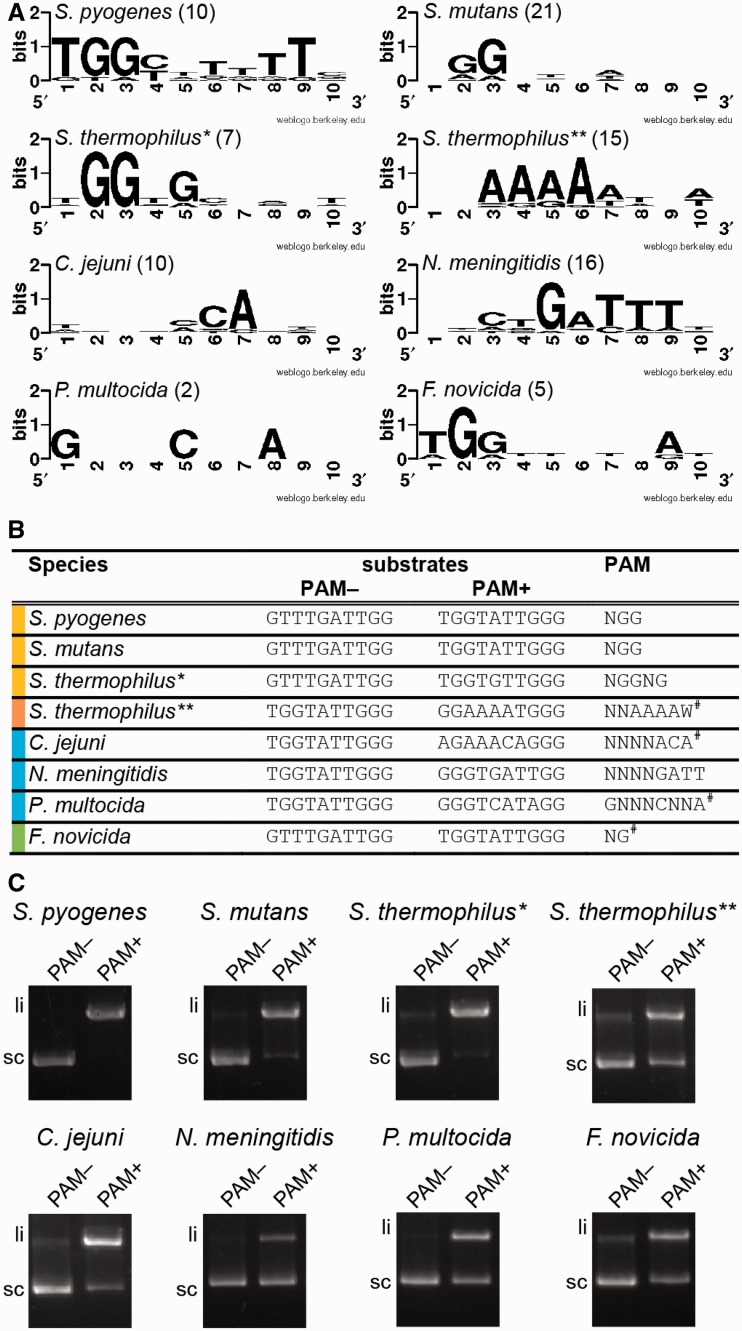Figure 5.
Cas9 orthologs cleave DNA in the presence of their cognate dual-RNA and specific PAM in vitro. (A) Logo plot of protospacer adjacent sequences derived from BLAST analysis of spacer sequences for selected bacterial species. The logo plot gives graphical representation of most abundant nucleotides downstream of the protospacer sequence. The numbers in brackets correspond to the number of analyzed protospacers. (B) DNA substrates designed for specific PAM verification. Based on the logo plot for each species, plasmid DNA substrates were designed to contain the speM protospacer and the indicated sequence downstream, either comprising (PAM+) or not (PAM−) the proposed PAM. The predicted PAMs were verified by cleavage assays narrowing down the necessary nucleotides for activity (data not shown); therefore the sequence used differs slightly from the logoplot shown in (A). The high abundance of other nucleotides not being part of the PAM can be explained by redundancy of the coding sequences containing the protospacers, and by the limited number of found protospacer targets. The last column shows the PAM sequence for each species, which was already published (no symbol) or derived from this work (#). (C) In vitro plasmid cleavage assays by dual-RNA:Cas9 orthologs on plasmid DNA with the 10-bp protospacer adjacent sequence (summarized in (B)). Each Cas9 ortholog in complex with its cognate dual-RNA cleaves plasmids containing the corresponding species-specific PAM (PAM+). No cleavage is observed with plasmids that did not contain the specific PAM (PAM−). li: linear cleavage product, sc: supercoiled plasmid DNA.

